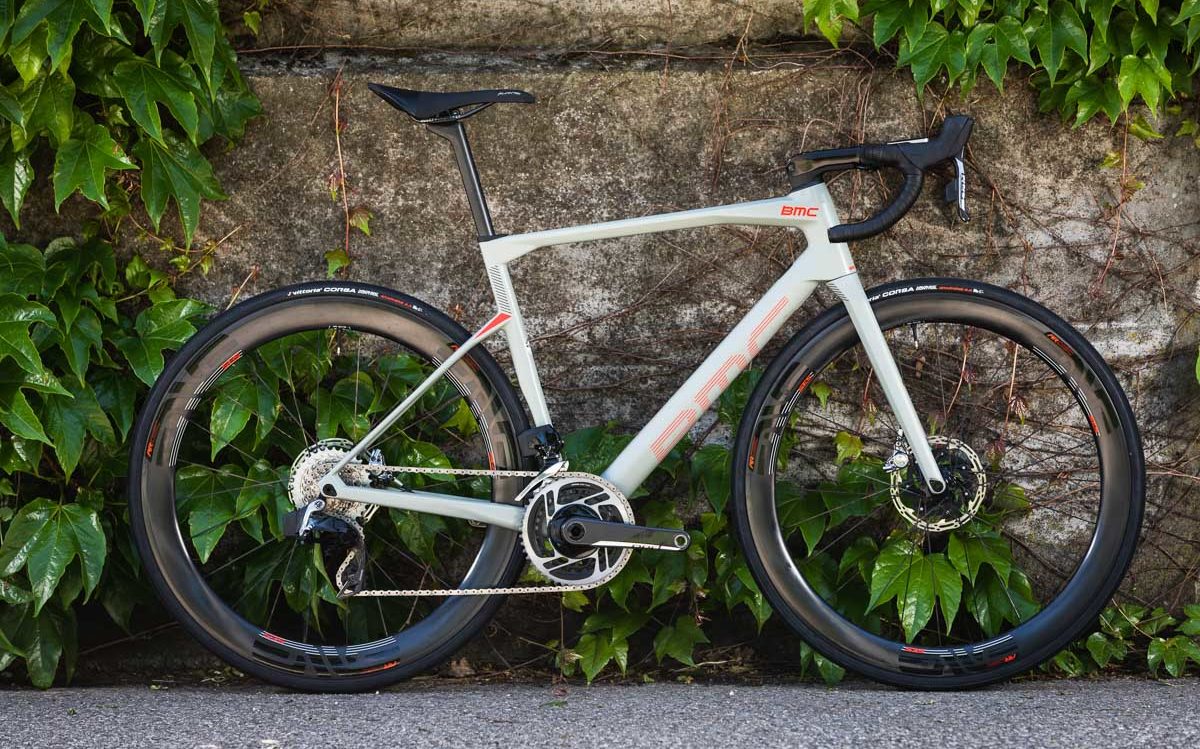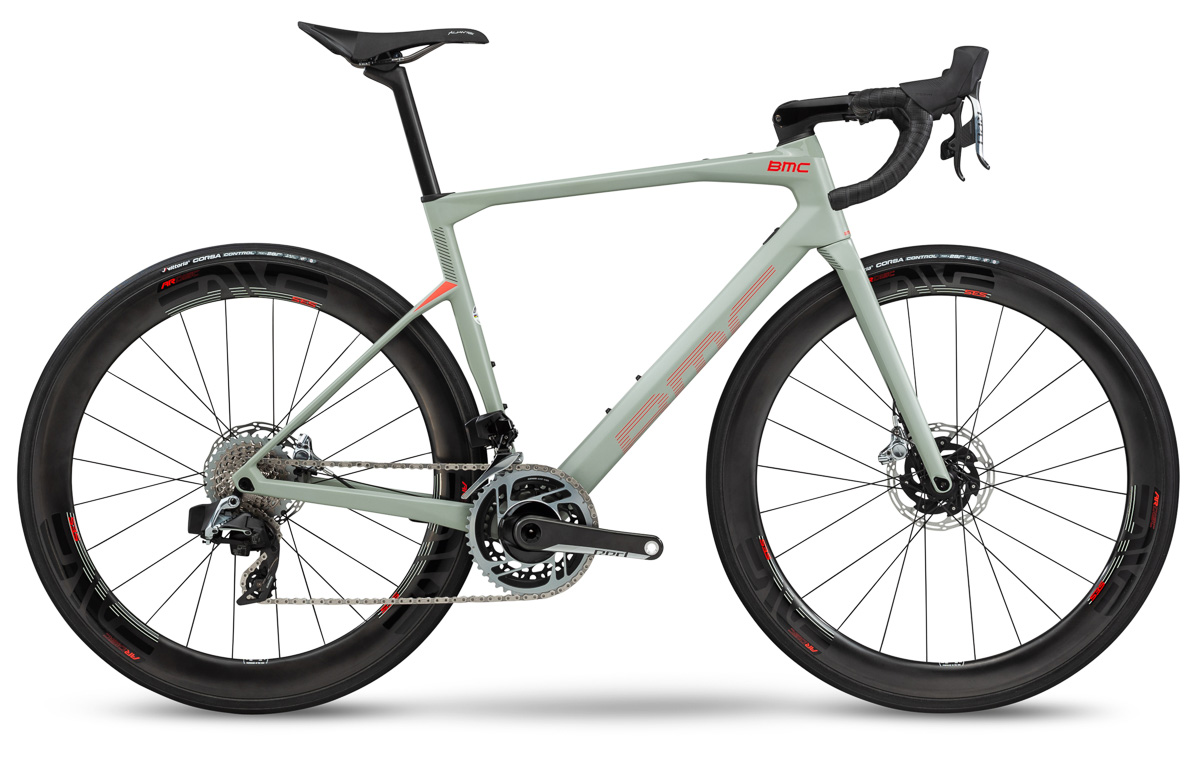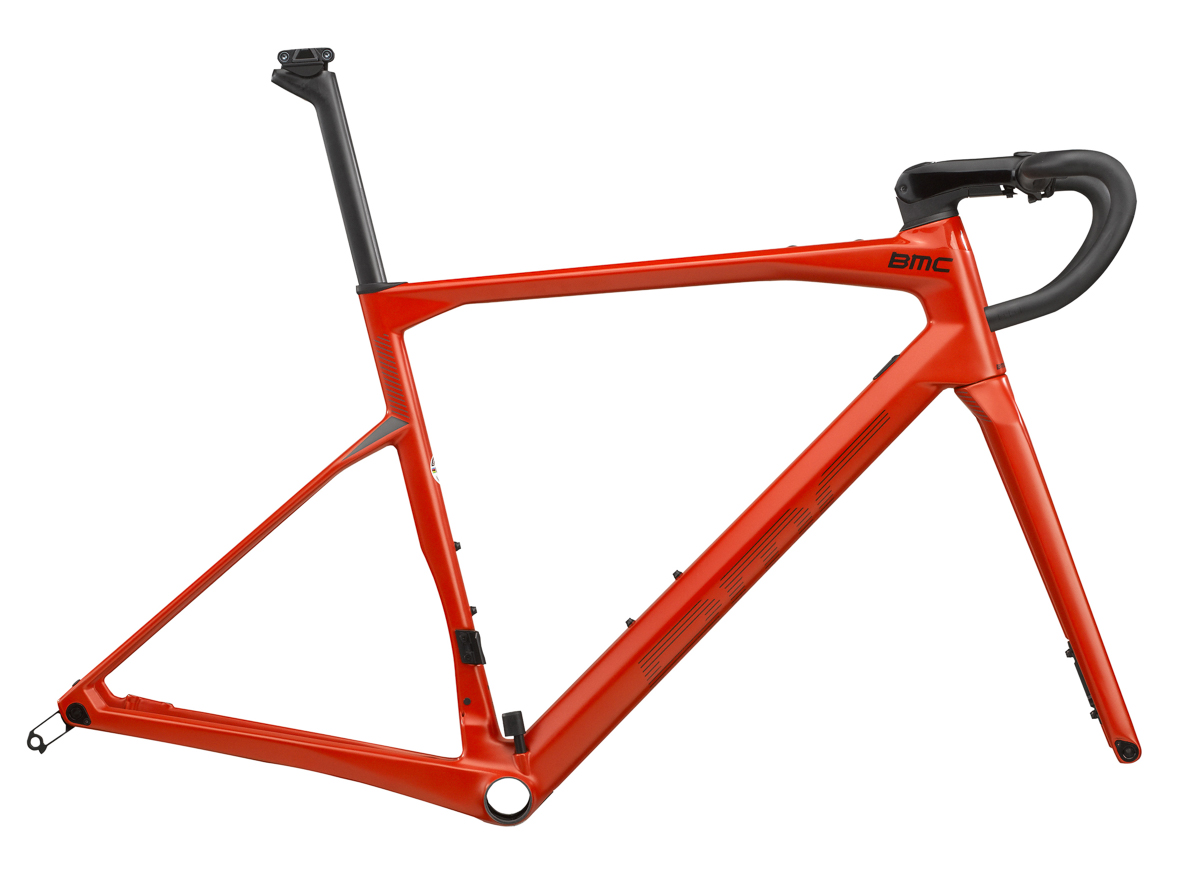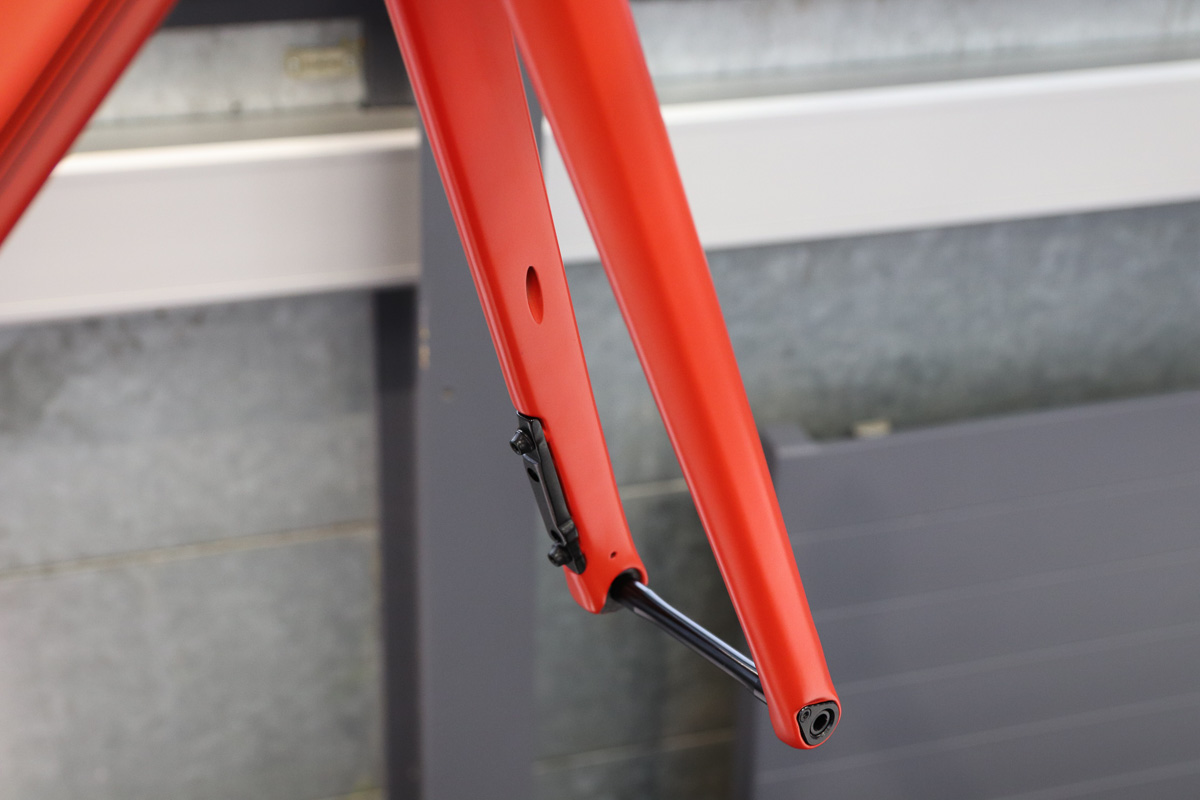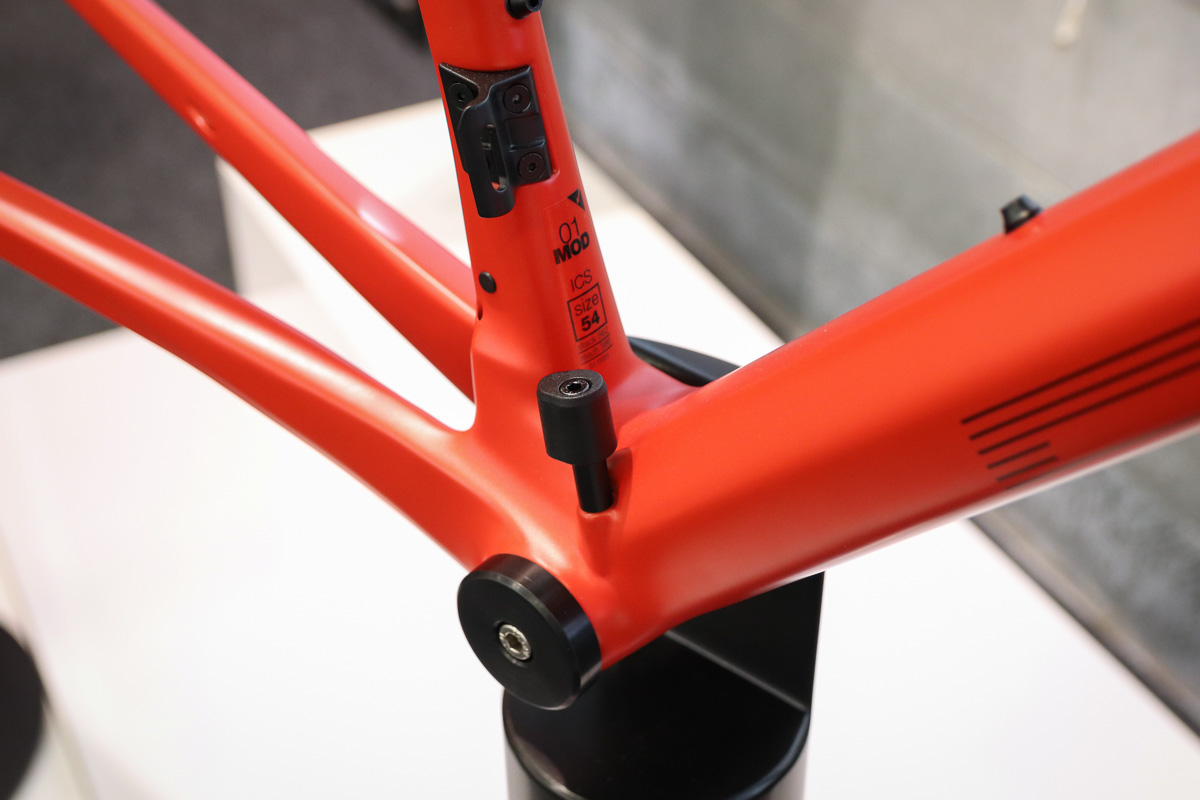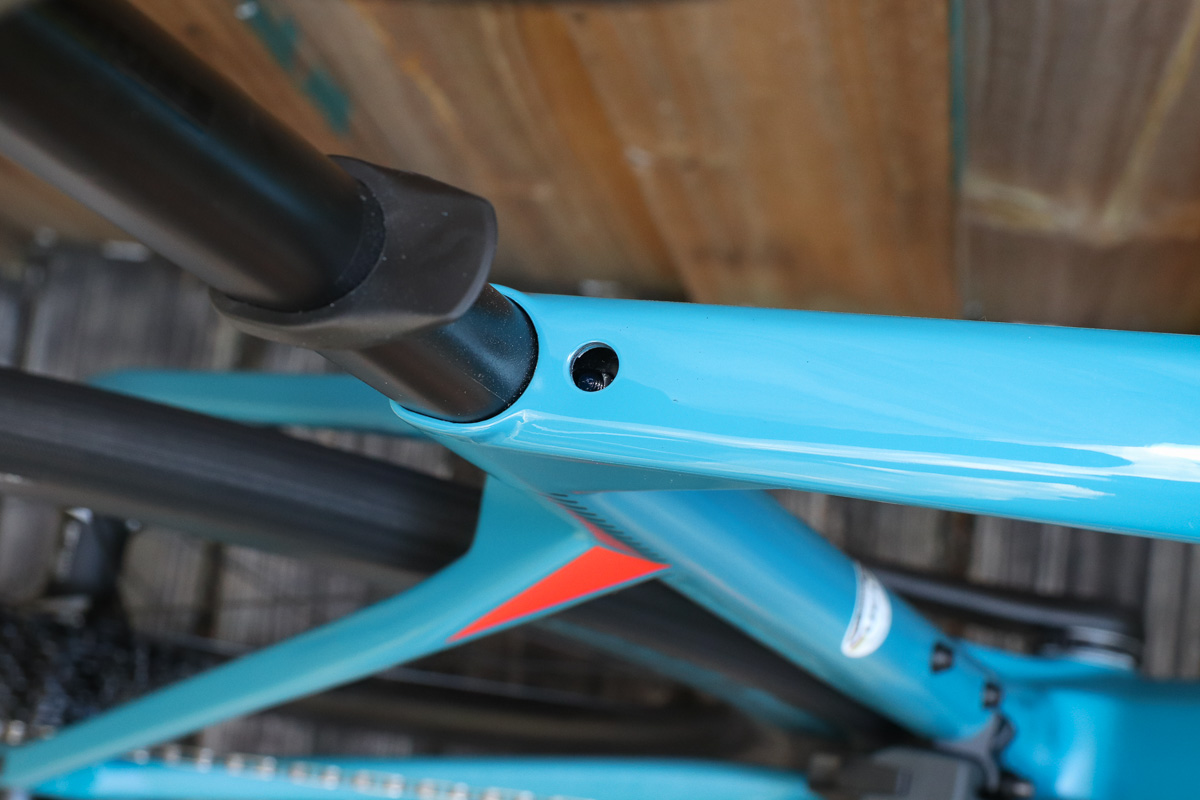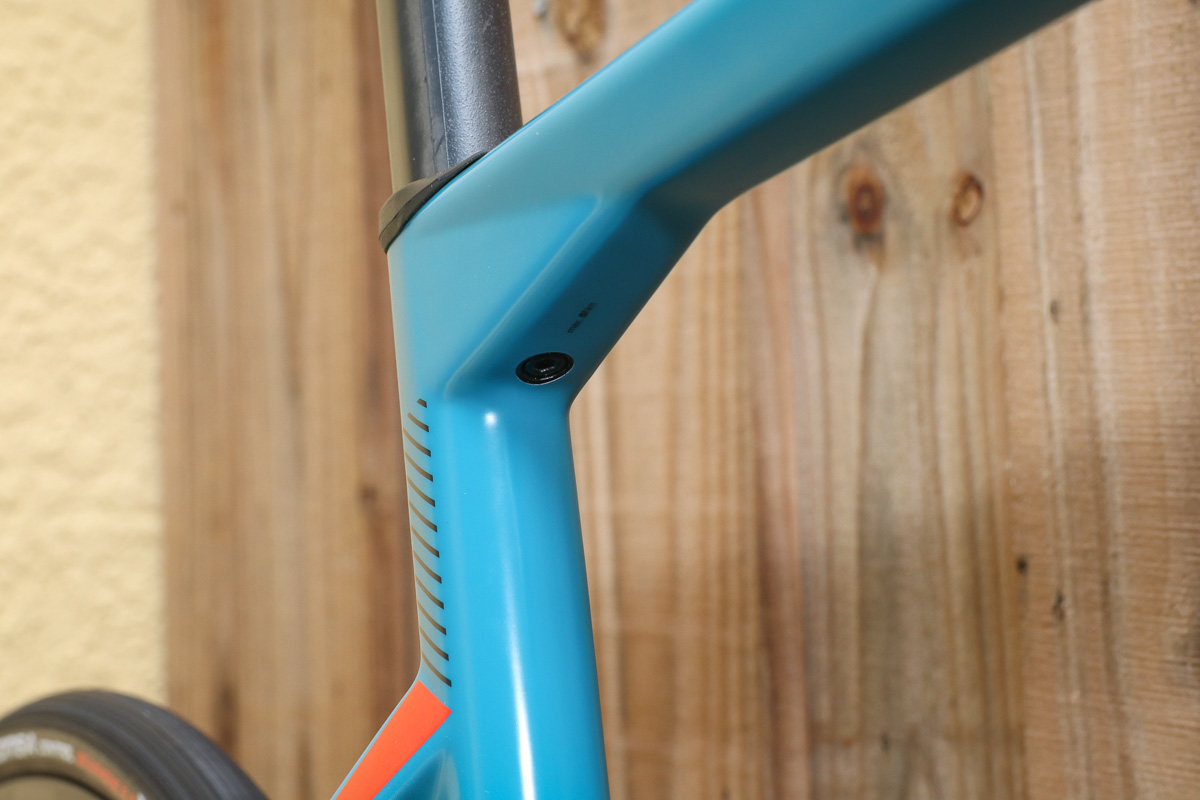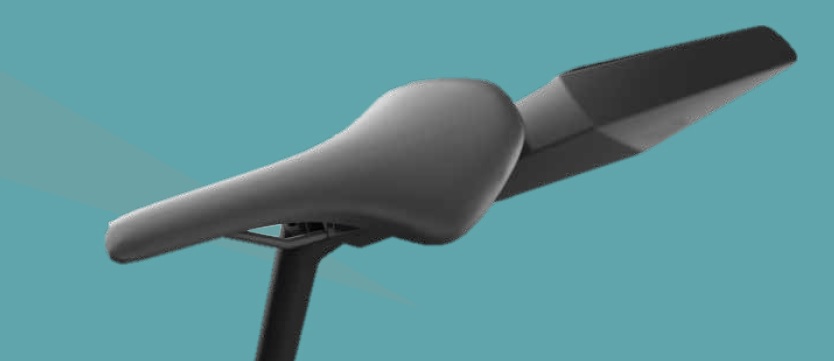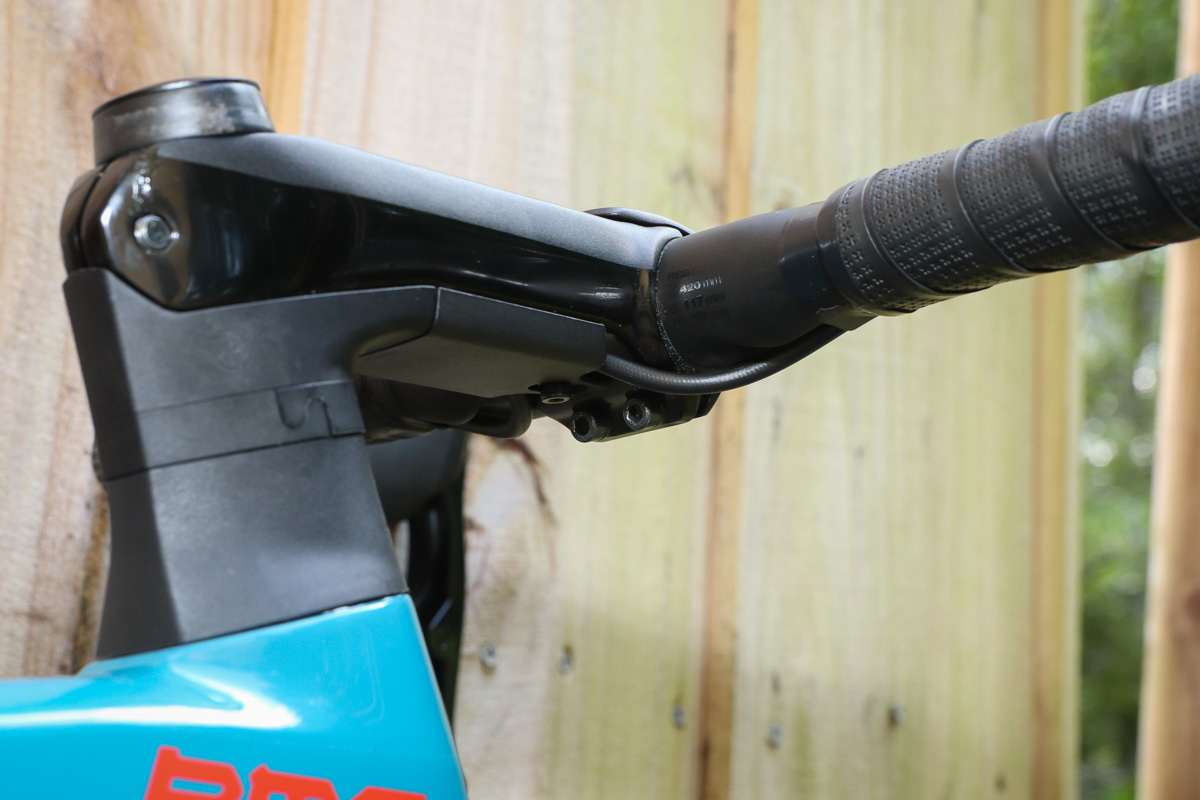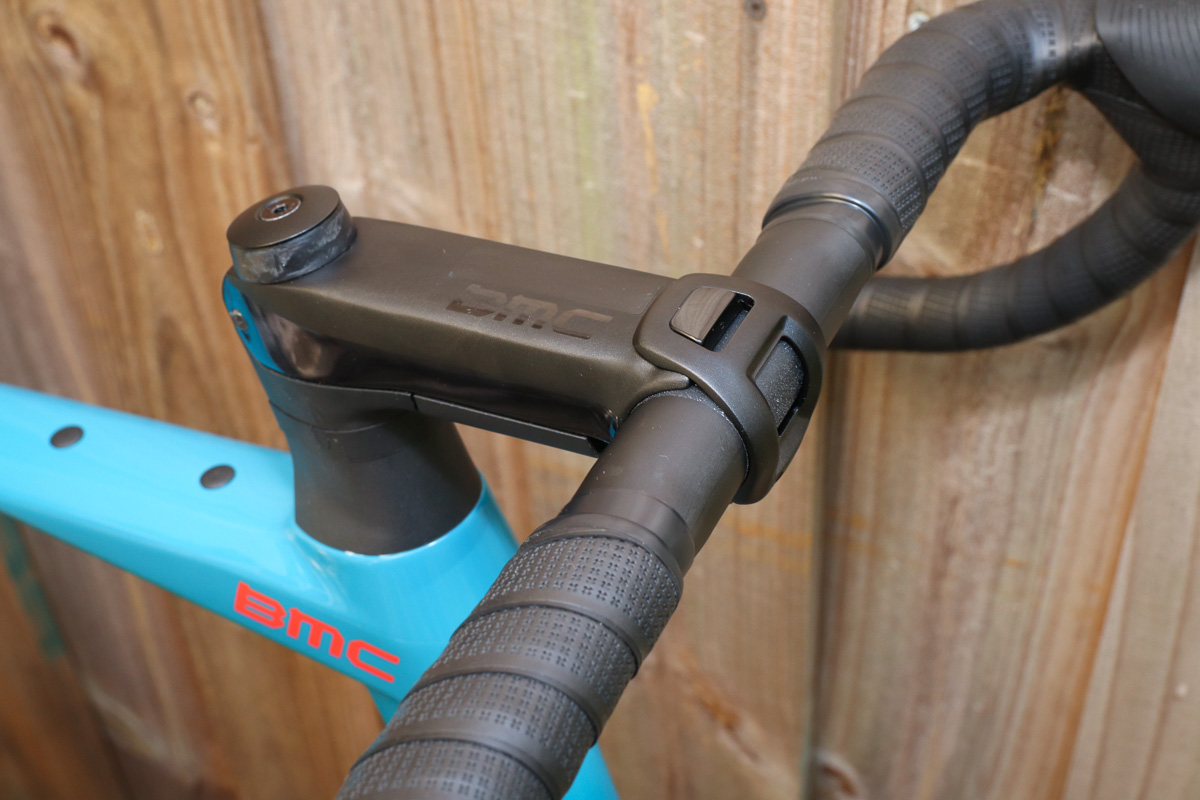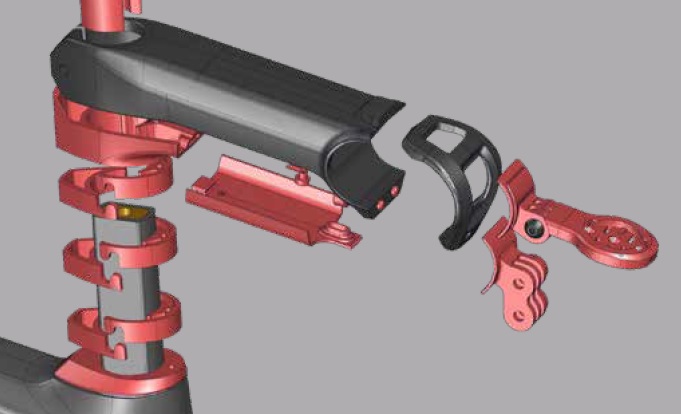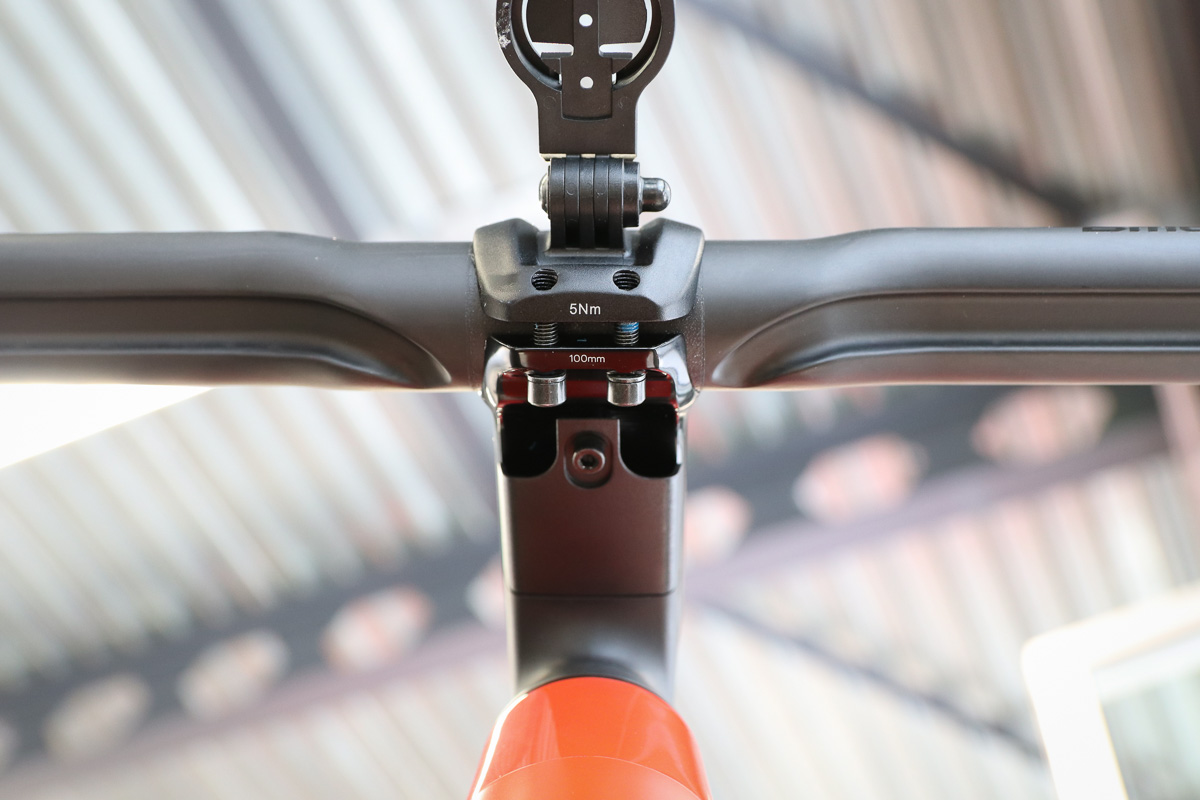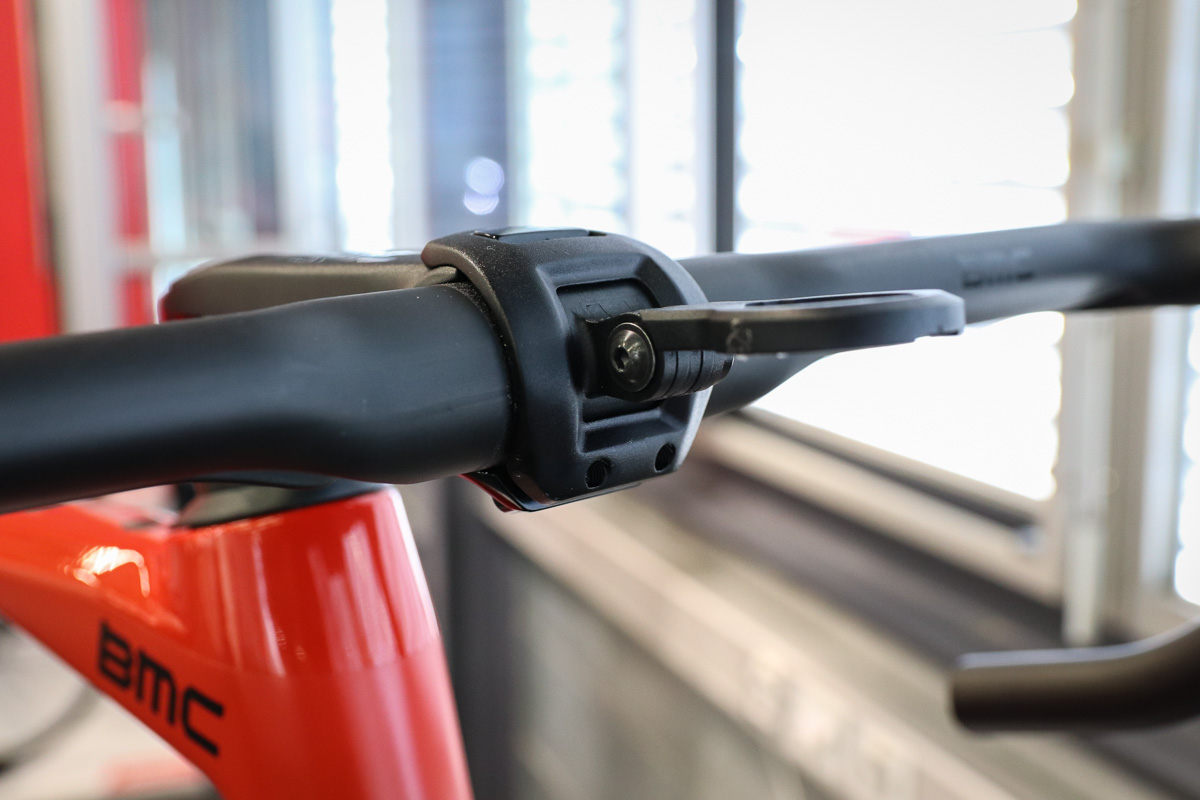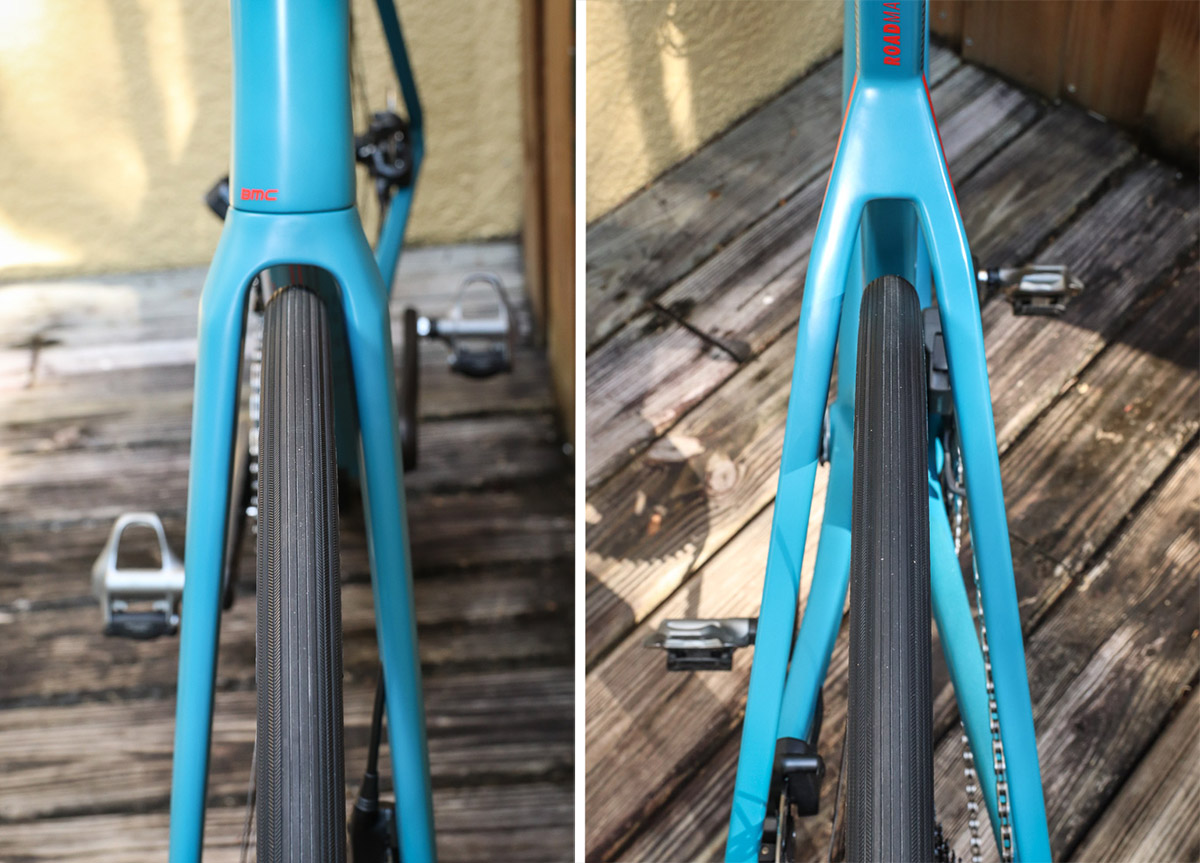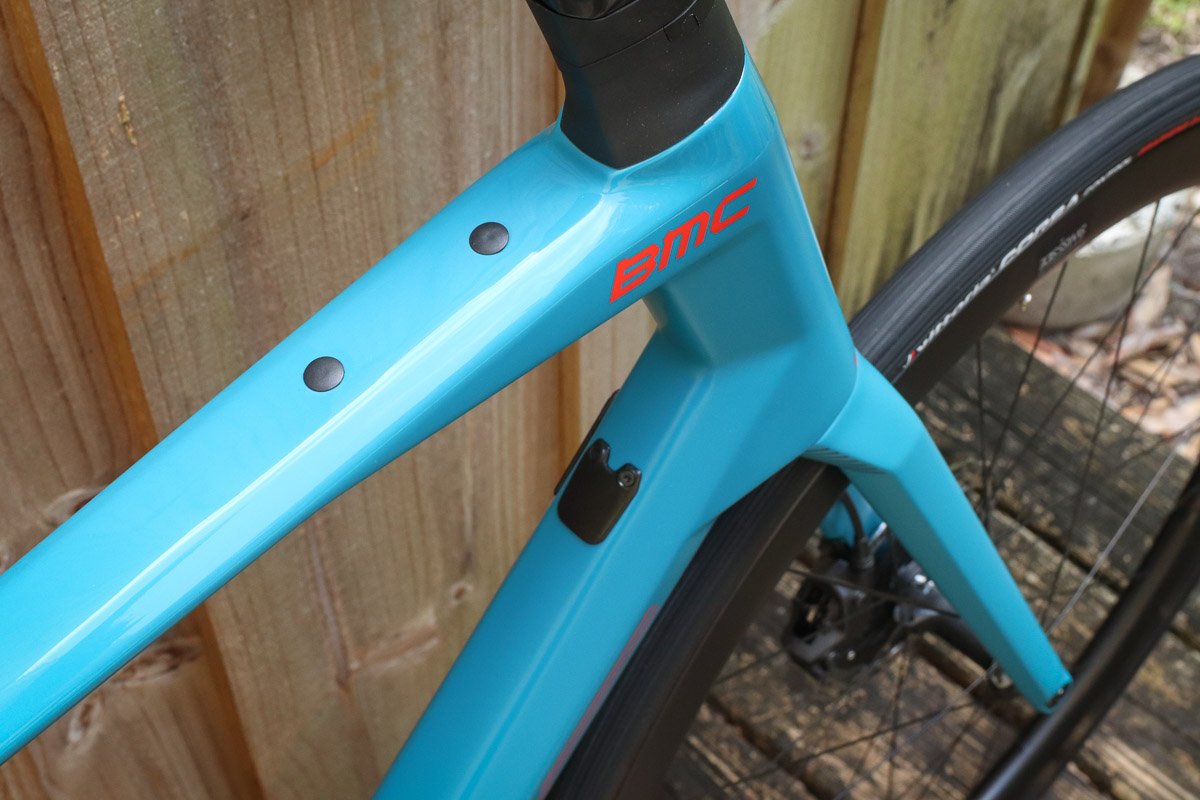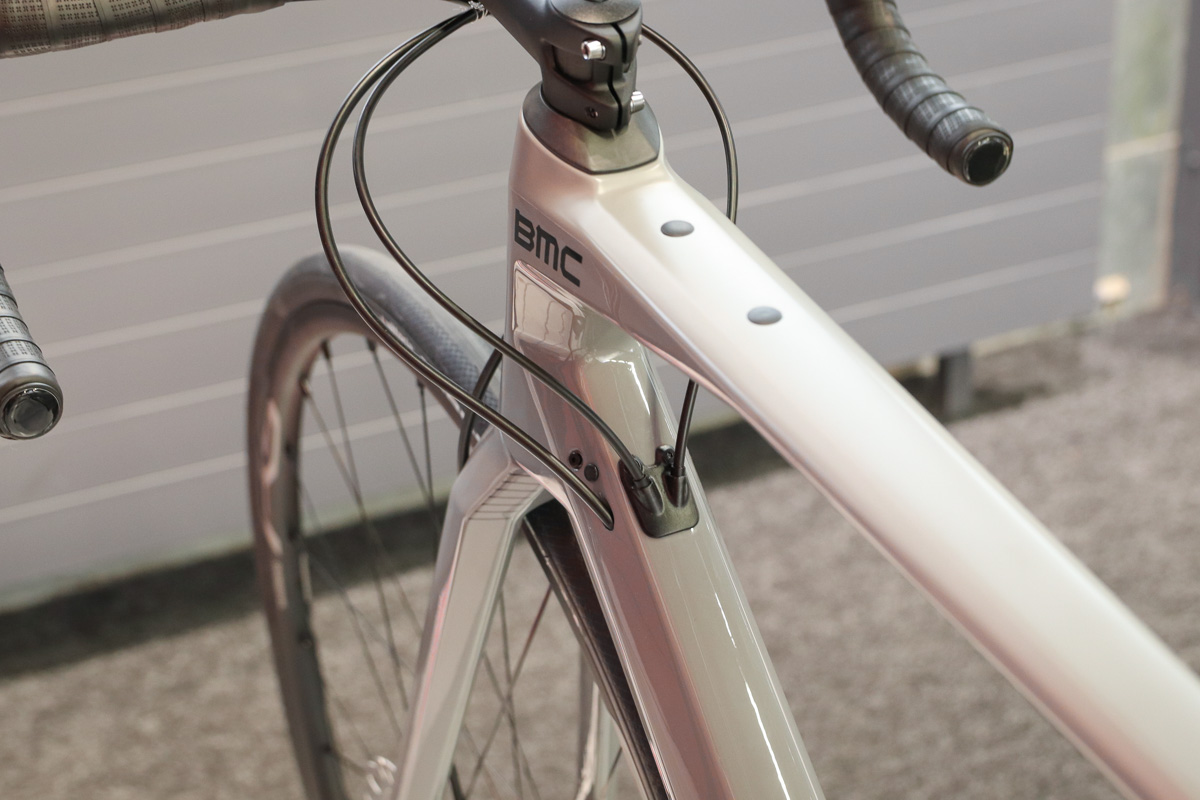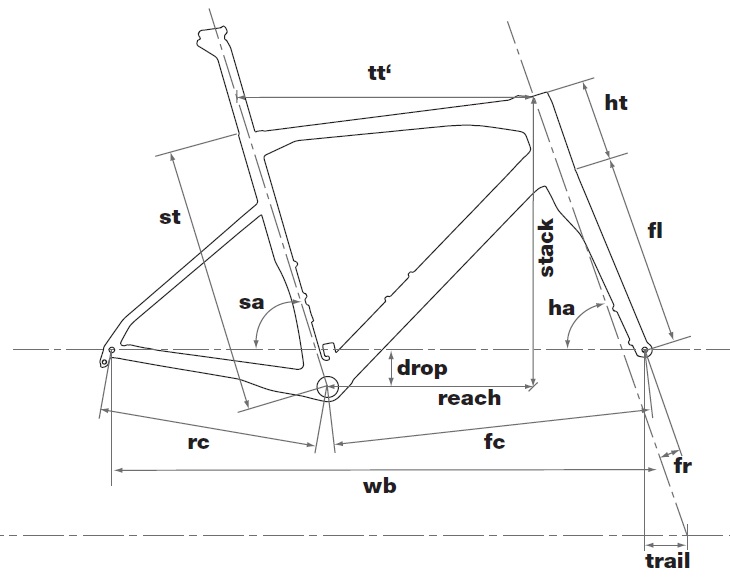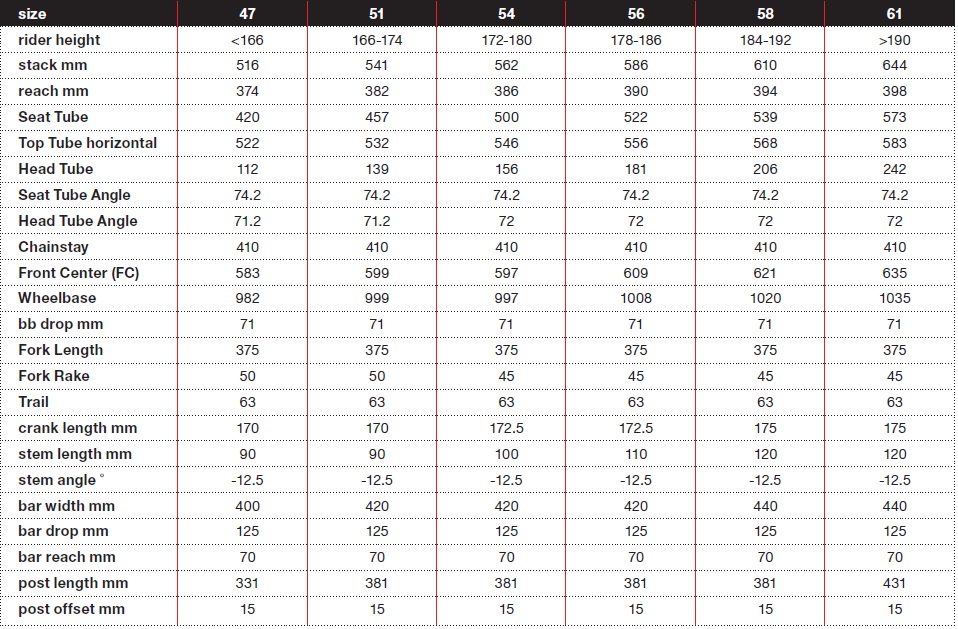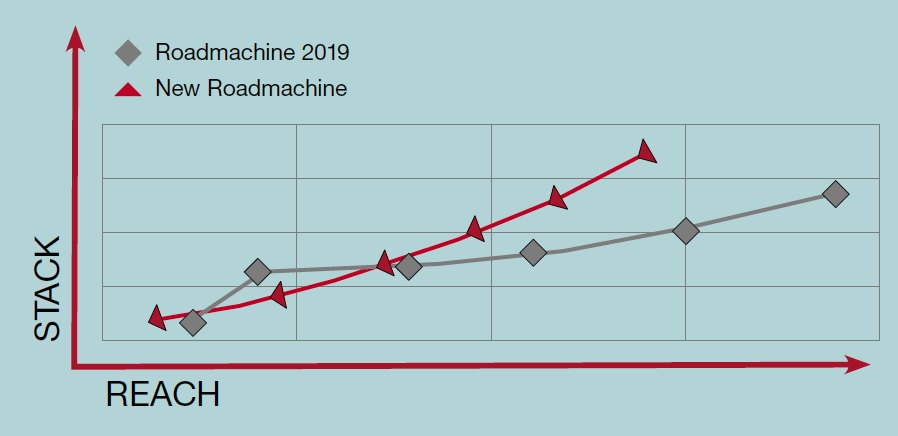BMC announced an all-new Roadmachine, replacing the previous version as their “One-Bike Collection” for road. In simple terms, that means that the Roadmachine is targeted as their most versatile high-end road bike for us regular folks, or racers who need more tire clearance and a more relaxed fit. With reduced weight, improved ride quality, increased stiffness, and a wider range of rider fit, BMC is aiming to take the top spot in endurance road.
BMC Roadmachine endurance disc brake road bike
The BMC Roadmachine is well-established by now, as a less-aggressive alternative to their race-focused Teammachine. You might think that this new version looks a lot like the previous one – and it does at first glance. Similarities include a slightly sloped top tube, flat mount brakes, angular down tube, D-shaped seat post, the BMC ICS (Integrated Cockpit System) stem/fork, and the now-iconic dropped seat stays.
However, the 2020 Roadmachine is all-new, with a completely new frame mold and layup, updated fork, a new seat post, lighter weight, improved stiffness, and expanded range of fit. We had a chance to attend the launch of this new bike in Solothurn, Switzerland, to learn more and test it in its native environment (read: lots of rain and climbing). With a rich cycling culture and friendly roads, it was a welcome change of pace for this American.
Frameset Highlights and Features
Let’s start from the frameset. While the previous version of the Roadmachine had a lower-cost alloy version, the new bike is carbon-only, opting to only affect price by component and fork spec. The Roadmachine 01 is the top-end frameset, using the BMC ICS (Integrated Cockpit System) fork and stem, to completely hide cables internally (more on this later). The Roadmachine 02 uses the same frame, but opts for a standard fork and stem with external routing to the frame ports. Both frames come in at 895g in size 54, compared to 920g for the previous version. Our tests were exclusively on the Roadmachine 01 with ICS.
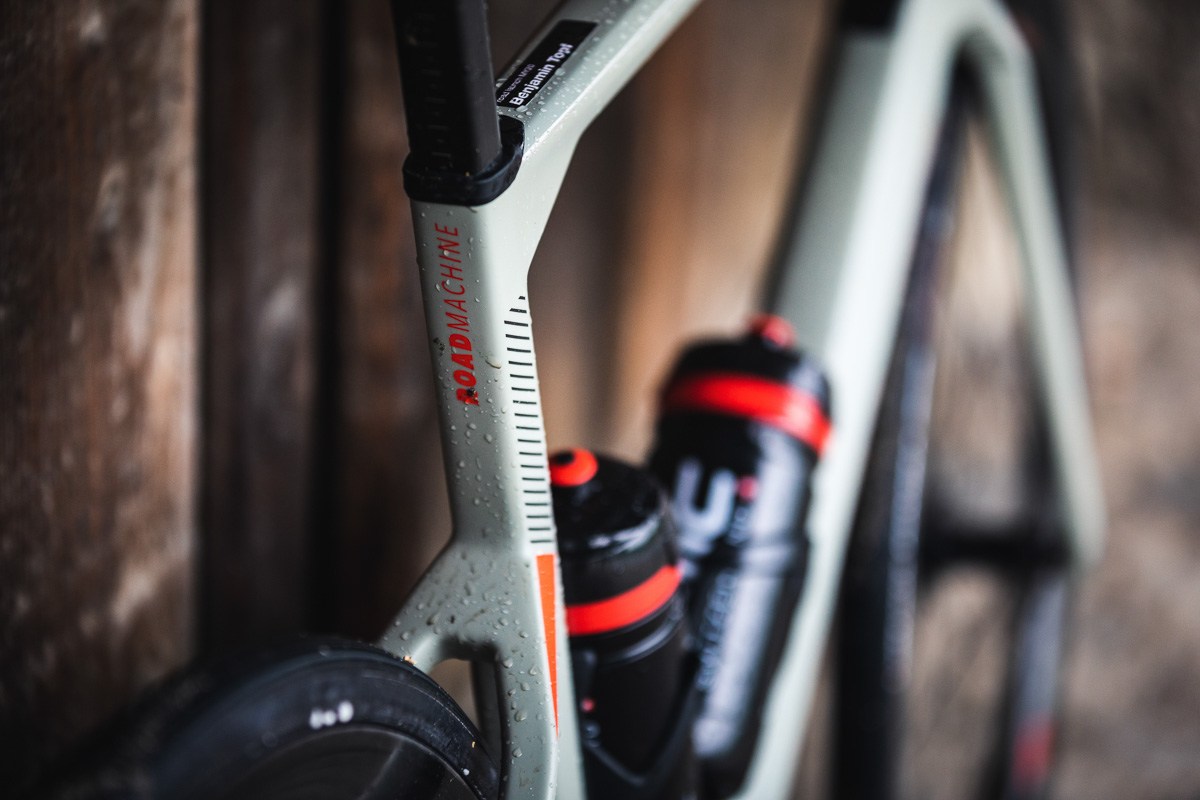
To put some performance numbers behind it, BMC quotes a 5% increase in BB stiffness, along with a 20% increase in torsional stiffness. I never had the chance to ride the older bike, but can say that there was never an apparent lack of stiffness through our wide variety of pavement surfaces, rolling terrain, and steep out-of-the-saddle climbs.
The frame and fork are disc-only and use the flat mount brake standard, along with 12mm front and rear thru axles (using the Shimano standard). Note that the fork also uses asymmetric legs to keep weight as low as possible, while remaining stiff enough for the demands of disc brakes.
The bottom bracket shell is PF86, and has an integrated chain catcher to avoid frame damage in the the case of a fallen chain.


BMC was clear to emphasize that ride quality was a big focus for the new Roadmachine, using their Tuned Compliance Concept, or TCC. This combines a few features, including an “Endurance-tuned” carbon layup, a slimmed-down fork, dropped seat stays, and their proprietary D-shaped seat post. In total, this adds up to a claimed 25% improvement in vertical compliance over the previous bike.
Note that this is an all-new D-shaped seat post, and it is not backwards-compatible to older BMC models with a D-shaped post (nor are older posts forward-compatible). The new version keeps the same 160g claimed weight, and is available in two offsets – 0mm and 15mm.
I found that the post can be a bit finicky to adjust the height, and BMC suggested (gently) hitting the saddle nose from side to side to loosen it up if it feels stuck in place. My other helpful tip is to not do what I did and stand around confused for several minutes trying to loosen the seat binder from the top – the bolt access is hidden underneath the top tube (see photo above).
One other cool seat-post-related tidbit is an integrated fender, called the Dfender. The post head has a third bolt specifically for this mini blade fender, for a very clean setup. Unfortunately, these were not yet available for our rain-soaked ride in the hills of Switzerland.
The BMC ICS stem uses a two-bolt face plate that locks into place on top. BMC was clear that, while there is likely a near-inevitable aero benefit to hiding all of the cables inside, their primary reason for doing so is simply for aesthetics and integration. It’s worth noting that the stem is only compatible with ICS forks with a flat steerer (and vice versa – you can’t just throw a standard stem on an ICS fork).
You also cannot flip the stem to change the angle, but BMC offers two angle options to satisfy different fit requirements. A zero degree version is made in 55, 70, 80, 90 and 100mm lengths, while a twelve degree can be had in 90, 100, 110, 120, and 130mm lengths.
The housings don’t actually route through the stem itself, but rather a cover that bolts to the bottom of the stem. Housings then route through a series of interlocking spacers on their way into the frame.
Go Pro and GPS mounts slide into the ICS face plate, keeping with the appearance of zero clutter.
Our test bikes were all outfitted with 28mm Vittoria tires, with maximum tire clearance quoted at 33mm (the UCI maximum for cyclocross).
On a final frame note, BMC opted to add a set of accessory mounts to the top tube, often reserved for gravel or adventure bikes. This is definitely growing in popularity, and something we expect to see on more and more new bikes of all types.
Build Options, Notes, and Pricing
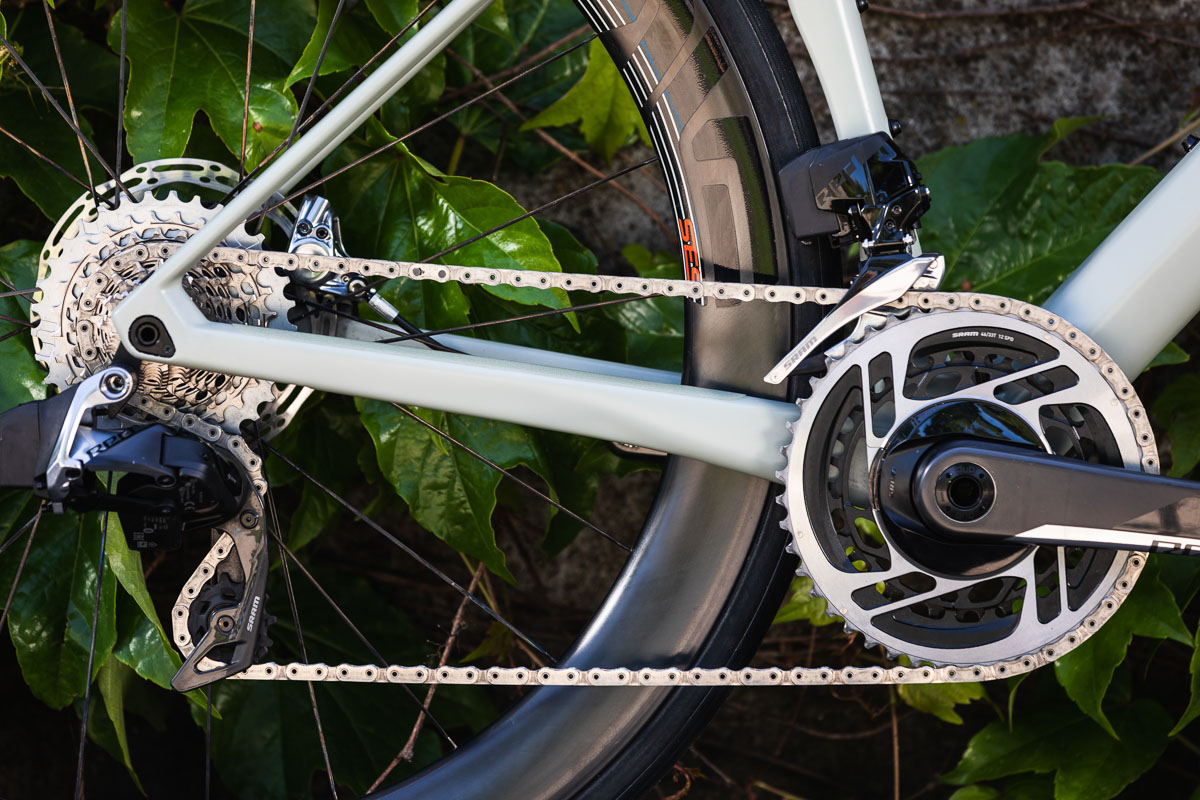
While there are several spec levels available, we’ll first comment on the Roadmachine 01 One with SRAM Red eTap AXS, which is the spec provided for our test bikes.
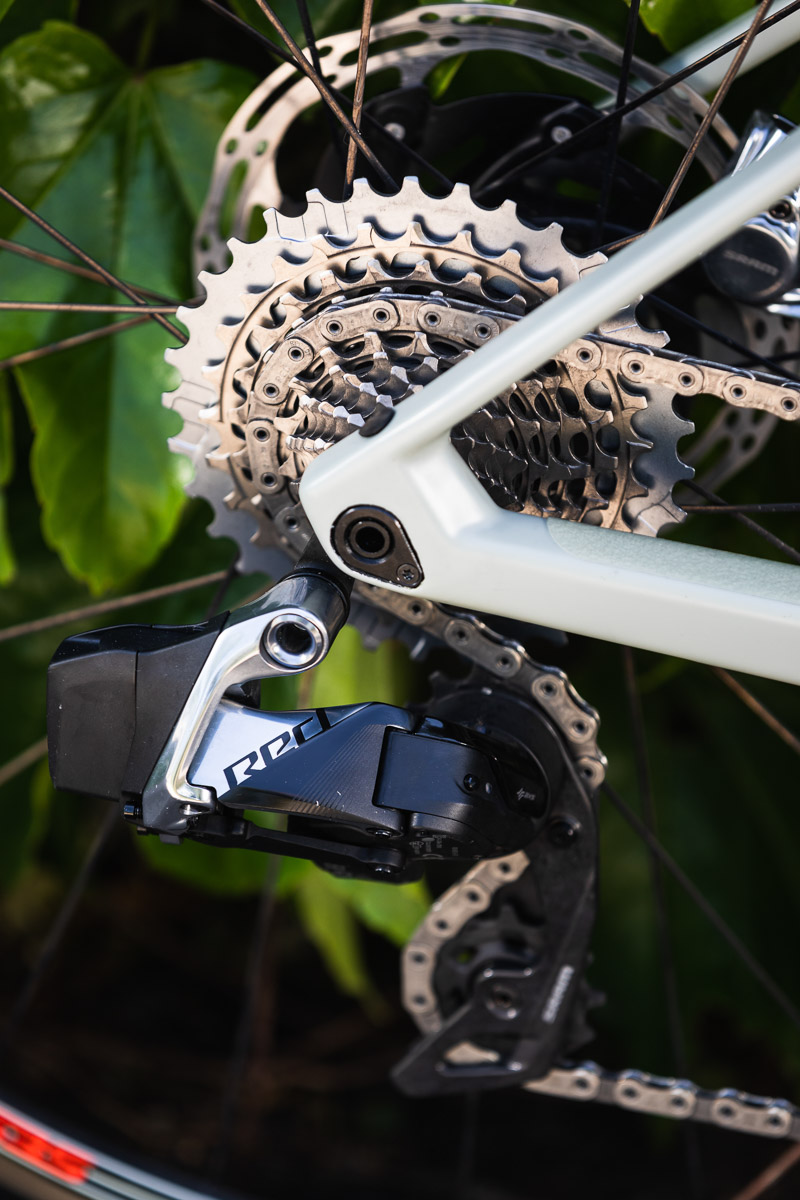
The gearing choice might look conservative at first, with 46/33 rings and 10-33 cassette, but I quickly appreciated the spec as we headed up (and down) steep grades. Front shifting does seem a bit slow on the Red AXS system, but I suffered no dropped chains.
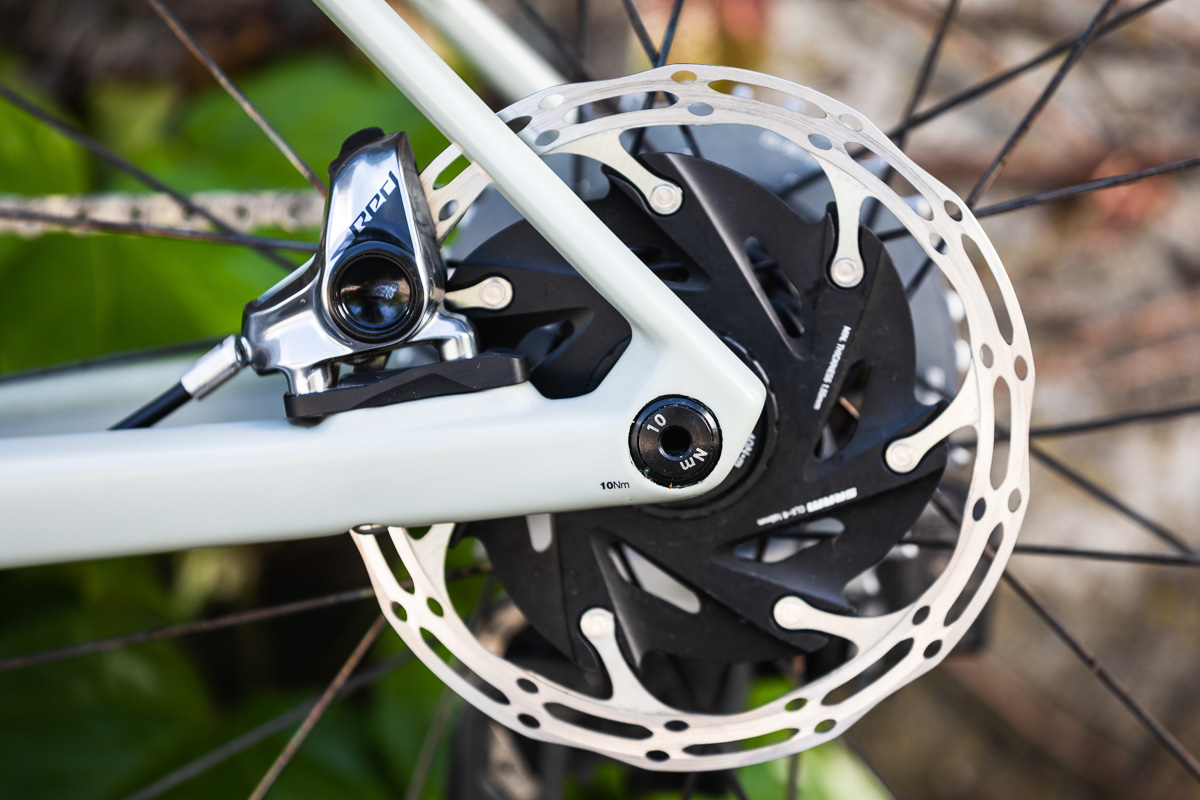

Brake spec continues with SRAM Red, using 160mm rotors front and rear. While stopping power was more than adequate, the rainy conditions resulted in a cacophony of squeals and howls with our group of ~20 people.
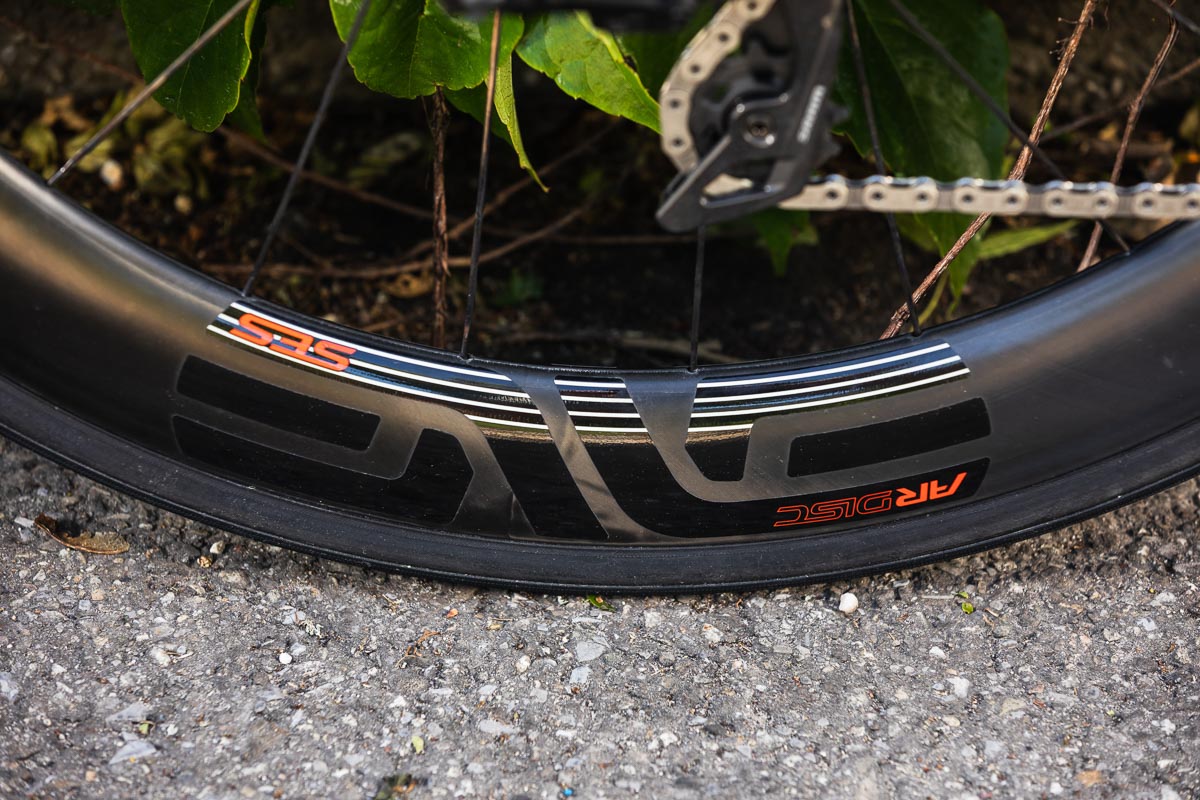
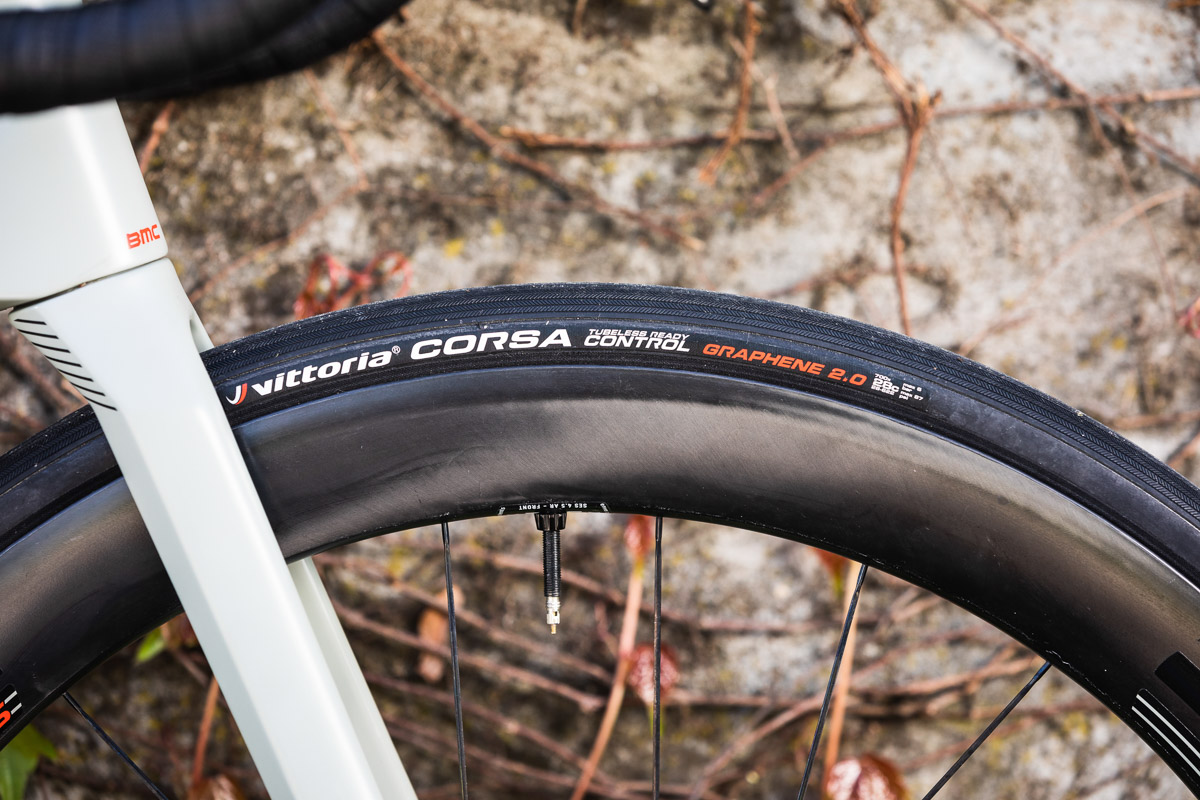
Wheel and tire spec included the ENVE SES AR 4.5 with 28mm Vittoria Corsa Control tubeless tires. The package rode and gripped well, though my rear tire was leaking sealant around the perimeter of the bead, requiring a wheel change.
Other build options include Dura Ace Di2, Force AXS, and Ultegra Di2 for the Roadmachine 01, and Ultegra Di2, Ultegra mechanical, and 105 for the Roadmachine 02. Non-ICS cable routing for the Roadmachine 02 models can be seen above, with cable entry ports that can accommodate all current drivetrains. Full pricing and basic spec can be found in the chart below (USD):
Geometry & Sizing
The Roadmachine is available in six sizes, all using 700c wheels.
Geometry is perhaps the biggest change from the older version of the bike, with a much larger range of reach. I’m 6’1″ with long legs, and typically fit best on a 58 with short-ish (~100mm stem). I was on a 56cm frame for the test with a longer stem, which resulted in a spot-on reach, but more drop than I prefer for long rides. I’ll typically flip the stem in such cases, but the ICS system prevented doing so. If I was buying one, I’d definitely opt for the 58cm and its taller head tube.
Ride Impressions


When it came to actually riding the new BMC Roadmachine, I was impressed with the balance of ride quality, and stiffness from the TCC frame, surely aided by the tubeless Vittoria tires and ~70psi pressure. For such a laterally stiff frame, you’d have no idea that it’s sub-900 grams, and the smoothness is a big cherry on top. It was my first time in Switzerland, and the breathtaking scenery wasn’t marred by the rainy conditions – and truly gave us an authentic experience.
The Roadmachine will be available worldwide beginning in July 2019 at BMC retailers.
